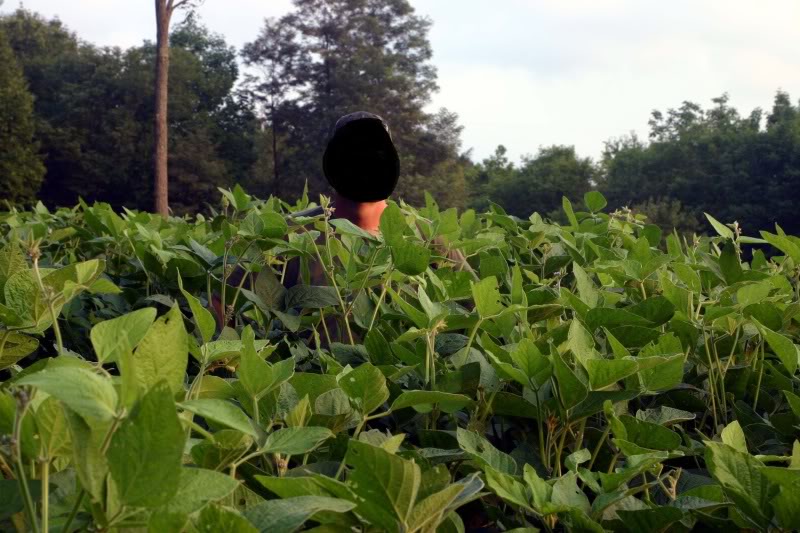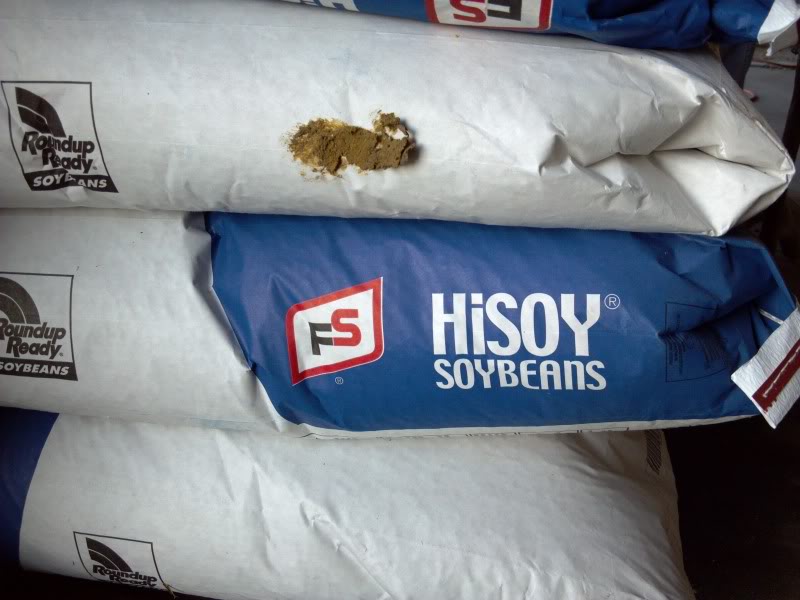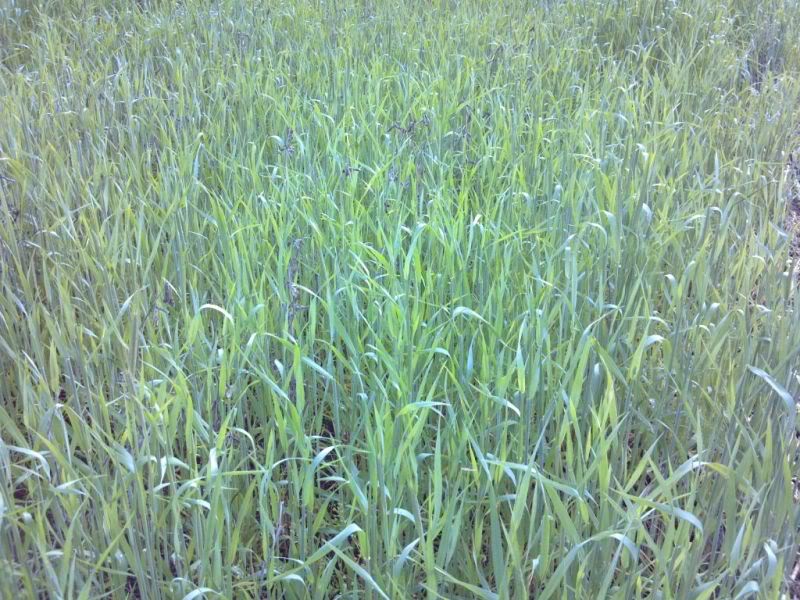December 23rd, 2011
Several people have wondered how the Real World Soybeans have held up with regard to shattering so i slipped down and checked on them...they are shattering but not as badly as most of the beans. Thus far I have not see ANY soybeans that were totally shatter resistant which is one inherent downfall of soybeans period and something each of you will want to keep in mind when deciding what crops to utilize.
These are shattered RW soybeans but since there are several varieties in Don's mix, it appears some are holding up better then others.
Some pods are still sold and holding up
In all of these pics you can see the winter rye overseeded into the beans
because rye can germinate down to 36 degrees and grow at 34 degrees, some people have noticed that rye is still germinating and growing that due to severe drought had not previously germinated. It may be too late to provide fall forage but will still provide early spring forage and become a great cover crop.
I traveled to Illinois yesterday to do a consultation and as we walked through the landowners soybeans (which were shattering as well) he mentioned that someone told him that deer wouldn't eat the beans in the pods and that they had to fall on the ground first...amazing sometimes how little people really understand about whitetails and apparently have never watched them stripping the beans from the pods as fast as they can!
Deer are opportunistic, meaning they will not pass up any opportunity to fill their bellies and they certainly don't mind eating beans on the ground. The problem however is that when we get rains the soybeans swell, turn mushy and start to rot on the ground or snows cover them and the melting snow causes the same problem, so beans that stay in the pods are far better with less waste.
In every plot I have multiple food sources, there is never any such thing as a field of beans or a field of clover for instance but rather each plot contains the right crop combinations to provide year around food sources. This also gives us a unique opportunity (with the use of trail cams) to observes usage 24/7 on many plots on many farms and the results are always the same. Whitetails feed on ALL the food sources and surprisingly, in every case spend as much or more time eating white clover, brassicas and the winter rye combination...as they do soybeans.
I sometimes go thru 30,000 to 40,000 trail cam pics when I check landowners cams which gives me a unique opportunity to really study whitetails day and night and easily dispel myth's and misconceptions. In contrast landowners who rely solely on observation by sitting on a food source a few days out of the year usually are clueless to what is really going on.
In every plot, deer eat EVERYTHING I plant...not deer in just one plot on just one farm, but EVERY farm....hundreds and hundreds of whitetails ALL readily feeding on the crops I plant for them. Sometimes...they may be in the beans....
but more often then not the cams reveal they are feeding on the winter rye/oats/peas/radish combination and Alice white clover planted beside it.
You are bombarded with fancy ads that promise huge bucks and some kind of magic attraction if you purchase their seeds and further confused by people who rely on observation a few days out of the year, but the truth friends is often far different. never pin your hopes on any one crop but rather attract and HOLD whitetails with a combination of year around food sources (where possible) in ONE single destination feeding area.
Choose the combinations that will work well for you and your budget and give deer time to adapt to that feeding area. The following are some combination suggestions that are 100% successful on every farm I work with.
Plant ALL in one plot in strips or blocks
Alice (or comparable) white clover 10% of plot
Brassicas in 45% of plot
Purple Top Turnips 3#
Dwarf Essex Rape 2#
GroundHog Forage radish 5#
Plant in mid to late July in most midwest states, or 60-90 days before your first killing frost. Follow the dead brassicas with oats and berseem or crimson clover in mid spring.
Cereal Grain combo in 45% of plot
Winter rye 50-80#'s per acre (56#'s = a bushel)
Spring oats 80-120#'s per acre (32#'s = a bushel)
Austrian Winter Peas or 4010/6040 Forage peas 20-80#'s per acre
Red Clover 8-12#'s per acre or white clover at 6#'s per acre
Groundhog Forage Radish 5#'s per acre
Plant in late August to early September
Rotate the brassicas and rye combo each year
or
Plant ALL in one plot in strips or blocks
Alice (or comparable) white clover 10% of plot
Brassicas in 45% of plot
Purple Top Turnips 3#
Dwarf Essex Rape 2#
GroundHog Forage radish 5#
Plant in mid to late July in most midwest states, or 60-90 days before your first killing frost. Follow the dead brassicas with oats and berseem or crimson clover.
Soybeans overseeded with winter rye, forage radish and red clover in 45% of plot
Plant early maturing soybeans, then as leaves start to yellow overseed the above mentioned crops at 100-150#'s of rye, 5#'s of radish and 15#'s of Mammoth red clover
Rotate the brassicas and soybeans each year
In each case the combination of crops will keep deer coming to that ONE place day after day, spring, summer, fall and winter and trail cams will reveal the truth that some would prefer you didn't see.....












































